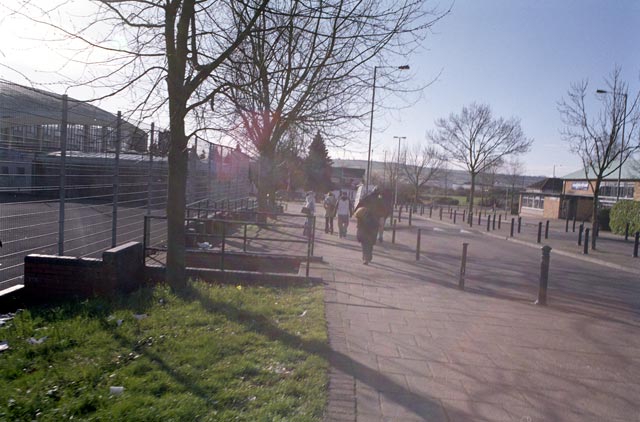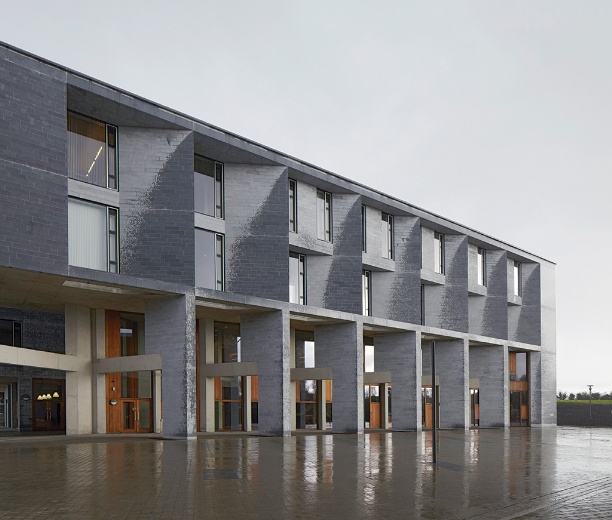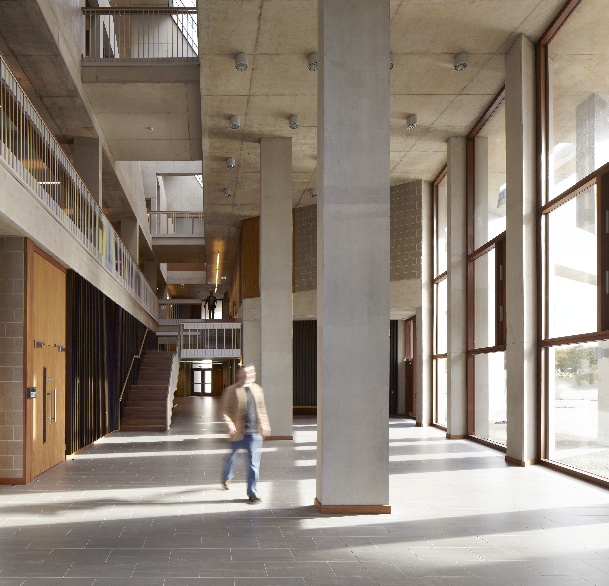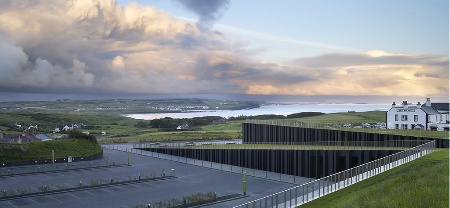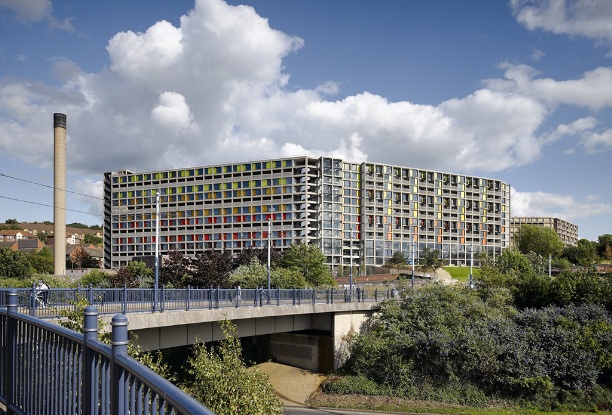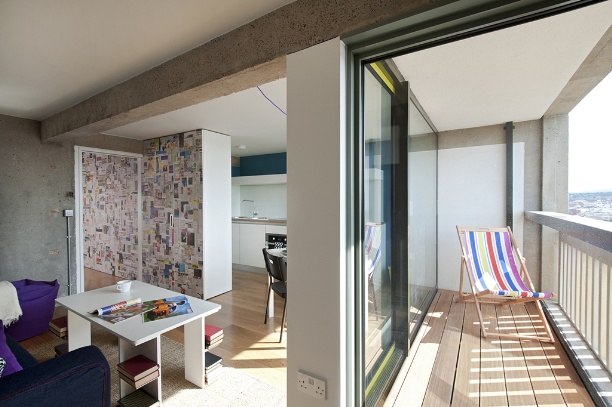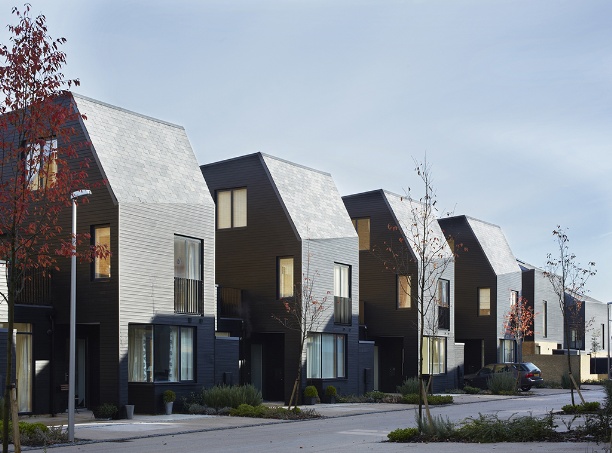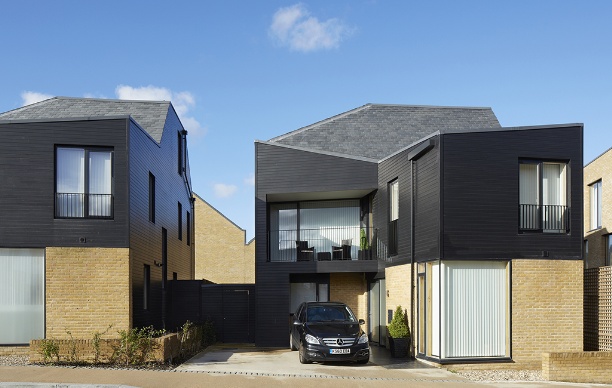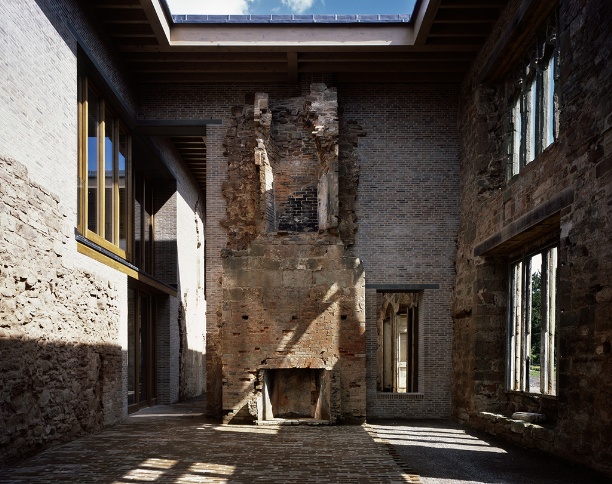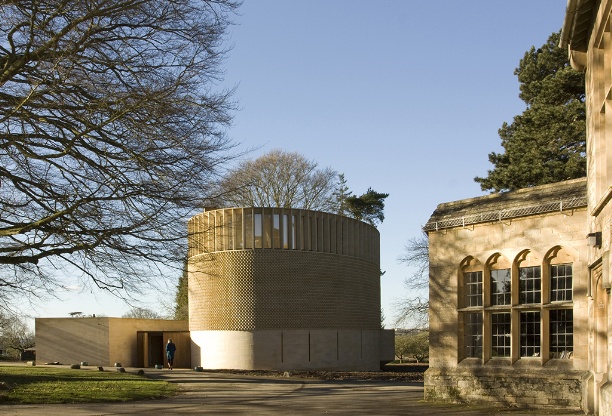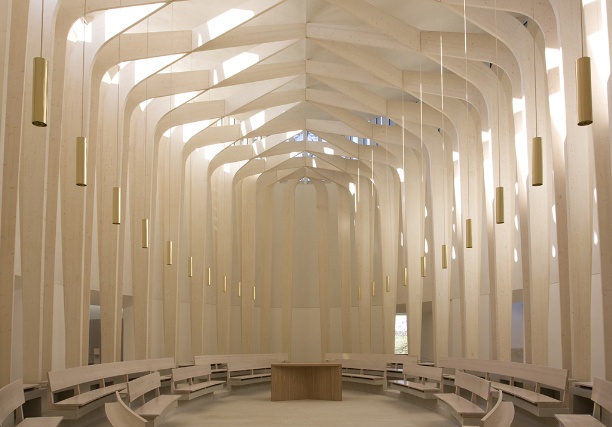University of Limerick Medical School and student accommodation
"An example of how to create a vibrant public space through careful design and placement. High-quality, beautiful and dramatic buildings that punch far above their rock-bottom budget" - RIBA
Giant's Causeway Visitor Centre, Northern Ireland
"Breaking the mould of the traditional visitor centre, this highly imaginative and sculptural piece of 'land art' offers an experience that is physical and interactive - the perfect prologue for the main event" - RIBA
Park Hill Phase 1, Sheffield
Hawkins Brown with Studio Egret West
"Reinvention of the loved and loathed grade II* listed 1960s estate. The structure remained in place while key features were changed - interior layouts, windows, security and more. It stands as a beacon for imaginative regeneration, quality mass housing and bold reuse of a listed building" - RIBA
"The radical rethinking of shape and interior of the UK house is tackled masterfully with these 84 new homes in suburban Essex that clearly illustrate that good design quality and committed developers can transform people's lives. A new model for British housing?" - RIBA
Astley Castle, Warwickshire
"A contemporary Landmark Trust holiday home installed in the ruined walls of a 12th century manor. It is a prototype for a bold new attitude to restoration" - RIBA
Bishop Edward King Chapel, Oxforshire
Niall McLaughlin Architects
"An uplifting space of great potency that the client has described as 'what we dreamed of but didn't think we would get'. An incredible showcase for modern British craftsmanship" - RIBA
There are several important comments to make regarding the short list and a series of analysis can be drawn from the list. Some of the issues represent a departure from both the theory and practice of the award in previous years and perhaps represent potential schisms in architecture, planning and development in the UK:
- The first point is that the issue of housing (a question to be vitally addressed) is obviously an important factor in this year's short list, with RIBA president Angela Brady commenting: "[These entries] shine a light on what the future of UK housing might be... [focused] on quality, affordable and desirable new homes". During the Prize's history only two housing schemes have previously been short listed. More importantly this year there are a further two entries which demonstrate a desire to tackle the issue of housing provision and design for the volume market (in contrast to prestige and high-end development in previous awards).
- In the first time in the award's seventeen year history, the short list consists of projects all outside of London signaling a move away from the architectural glitter seen in the capital. And while 'the urban' remains well represented, a couple of the projects are focused on the relationship to the countryside and the rural.
- One other important comment is that the awards (having taken similar steps last year) seem to have moved away of the grandeurs projects and big names which have been featured in previous awards in favour of projects with 'quieter qualities'. In particular the entry from Heneghan Peng (buried under eye line) demonstrates an un-obvious or showy approach. Perhaps this suggest a far more thoughtful and humble approach, which may signal how British architecture will develop over the next few years.
Our pick of the short listed entries is Newhall Be from Alison Brooks Architects. This project represents both an imaginative response to critical issues (both in terms of architecture and economics), while providing a strong focus on the delivery of quality design. A short video about our favourite entry can be found below, while more information regarding all of the entries can be found on the RIBA website. For those of you who subscribe to BD, they have also featured an interesting article on how the bookies rate the projects.
The winner of the RIBA Stirling Prize 2013 will be announced on 26th September
Images from bdonline.co.uk












